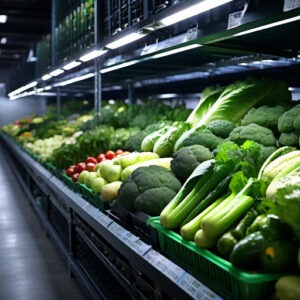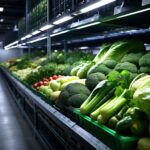In the realm of agriculture, preserving harvested crops is a crucial challenge for farmers. One effective solution to this challenge is cold storage. This article explores the concept of cold storage, its benefits, and the process of making it, enabling farmers to safeguard their produce for extended periods.
What is Cold Storage?
Cold storage refers to a preservation structure designed to maintain crops, fruits, and vegetables at optimal temperatures. This ensures an extended shelf life, preserving freshness, taste, and nutritional value. Additionally, governments often subsidize cold storage facilities to support farmers in preserving their produce effectively.
Benefits of Cold Storage
- Longevity of Produce: Cold storage significantly extends the shelf life of produce, enhancing its value.
- Increased Earnings: Proper storage and marketing of produce can result in higher profits for farmers.
- Investment Protection: Investing in cold storage protects farmers from losses due to spoilage.
- Enhanced Shelf Life: Cold storage significantly extends the shelf life of perishable goods, including fruits, vegetables, and dairy products. By maintaining optimal temperature and humidity levels, farmers can preserve their produce for longer periods, reducing waste and increasing market reach.
- Improved Quality: Cold storage helps maintain the quality and freshness of agricultural products. By preventing microbial growth and enzymatic reactions, cold storage ensures that produce retains its nutritional value, taste, and texture, meeting consumer expectations and demands.
- Reduced Post-Harvest Losses: Post-harvest losses account for a significant portion of agricultural waste globally. Cold storage mitigates these losses by slowing down the ripening and decay processes, allowing farmers to store their produce until it can be transported or sold.
- Increased Market Access: Cold storage enables farmers to access distant markets that were previously unreachable due to transportation constraints. By extending the shelf life of their produce, farmers can explore new markets and expand their customer base.
- Minimized Dependency on Seasonal Factors: Cold storage reduces farmers’ dependency on seasonal factors and market fluctuations. It enables them to store surplus produce from high-yielding seasons and sell it during low-yielding seasons, ensuring a steady income stream throughout the year.
- Value Addition: Cold storage facilitates value addition processes such as sorting, grading, and packaging. This adds value to the produce, making it more appealing to consumers and fetching higher prices in the market.
- Food Security: Cold storage plays a crucial role in ensuring food security by preserving surplus produce for future consumption. It helps stabilize food prices and availability, especially in regions prone to food shortages or climatic uncertainties.
How to Make Cold Storage/How to Install Cold Storage
Creating cold storage involves several key steps:
- Select Suitable Land: Choose land that can be converted into non-agricultural use.
- Obtain Local Authority Permission: Seek necessary approvals for the cold storage project.
- Safety Testing: Perform vacuum and pressure testing of cold storage machinery for safety compliance.
- Water Management: Use soft water and install a water softening plant if necessary.
- Insurance: Insure the cold storage facility against potential risks.

Government Subsidies for Cold Storage
Governments provide substantial subsidies for cold storage construction:
- Subsidy Details: Farmers can receive 50 to 60 percent subsidy for building cold storage.
- Government Loans: Entrepreneurs can access loans to initiate cold storage projects.
- Scheme Availment: Farmers can benefit from these schemes by contacting their local agriculture officers.
Conclusion
Cold storage plays a pivotal role in agriculture by ensuring the long-term preservation of produce. By understanding the process and benefits of cold storage, farmers can enhance their income and reduce post-harvest losses.
Click Here For More Information
FAQs
- How does cold storage benefit farmers? Cold storage helps farmers preserve their produce for longer periods, allowing them to sell at optimal times for better prices.
- Can cold storage be built at home? Yes, with proper planning and adherence to safety regulations, cold storage can be constructed on residential or farm premises.
- What government support is available for cold storage construction? Governments offer subsidies of up to 60 percent for building cold storage, along with loans for entrepreneurs.
- Is cold storage environmentally friendly? Cold storage can be environmentally friendly if it is energy-efficient and uses sustainable practices in its construction and operation.
- How can farmers ensure the safety and quality of produce in cold storage? Regular monitoring of temperature and humidity levels, along with proper handling and storage practices, can ensure the safety and quality of produce in cold storage.










